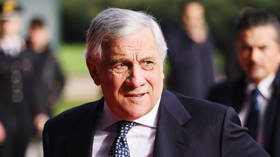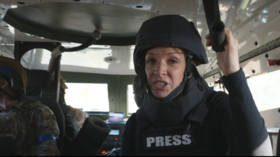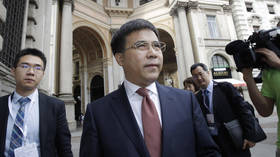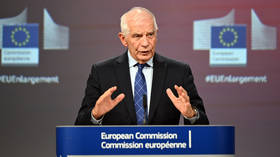6 veterans per day seeking post-traumatic stress help – military charity
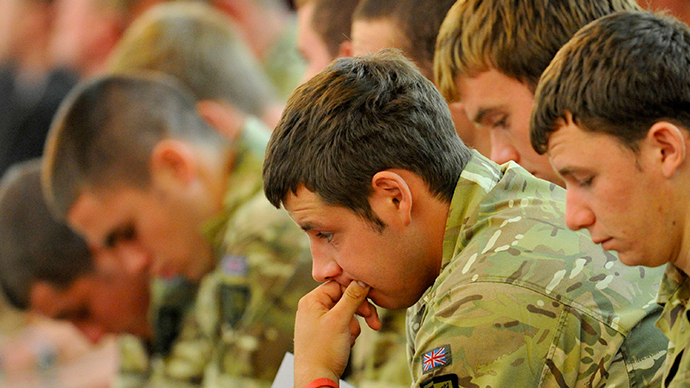
Experts warn the “floodgates” of post-traumatic stress are about to open, as a top armed forces charity claims mental health issues among military personnel have risen 26 percent over the last year.
The charity Combat Stress, which supports veterans with mental health issues said: “This increase is mainly accounted for by a marked rise in those who served in Iraq and Afghanistan seeking help.”
Some 2,264 personnel have requested treatment with three-quarters said to be suffering from post-traumatic stress disorder (PTSD) – an average of six veterans per day over the last 12 months.
Many are also affected by depression and abuse of alcohol and drugs – symptoms associated with the condition.
READ MORE: British war veterans deprived of long-term support – MPs
Head of medical services at Combat Stress Dr Walter Busuttil said: “It is the biggest increase we have seen in recent years and we expect it to continue, so we are building up our clinical services accordingly.”
“I do think there needs to be more significant investment in relation to veterans’ mental health. The good news is that we do have treatments that work.”
In a report carried out over the last two years, Combat Stress claims the success rates for veterans on its PTSD Intensive Treatment Programs are around 90 percent.
Other groups have questioned the effectiveness of treatments used by Combat Stress, however, which favors methods like Cognitive Behavioral Therapy (CBT) and Eye Movement Desensitization and Reprocessing (EMDR).
Martin Webster served in Iraq before becoming a therapist. He now runs the New Leaf Program, helping mentally damaged veterans.
He called EMDR and CBT treatments out of date.
Speaking to RT, Webster said he wants to see “a coalition of military mental health organizations” that can come together to “look at the academic evidence, see what therapies are available, what has been independently studied” in order to provide the best solutions.
He said the treatments commonly in use are inadequate.
“Some of the veterans of Iraq and Afghanistan have done more than two years in a conflict zone. That has never happened in human history,” said Webster.
“It is a cataclysmic experiment because PTSD affects society as a whole. Ten percent of prisoners are ex-forces, and 9,000 homeless are ex-forces.”
READ MORE: Number of UK Afghan war veterans seeking mental help doubles in a year
Dennis Carlon is part of the independent psychological team that works alongside charity Talking 2 Minds.
He told RT: “There is not enough being done. They are banking on therapies that do not work, so every 3 months they have the same people back in therapy such as CBT and EMDR.”
The Ministry of Defence (MoD) maintains the rise in referrals is a good sign – the result of their efforts to increase awareness in the ranks and destigmatize PTSD.
Carlon contests the claim, saying while “the MoD have put some effort in,” its record speaks for itself.
“The figures do not add up, as normal with the MoD. They are known to lower the PTSD rate [figures]. They simply do not know it.
“I asked them a couple of years ago [whether] they have figures for veterans who have committed suicide, to which they replied no.”
“The true figure for PTSD is rising all the time and I feel the flood gates are about to open.”
The MoD also suggests levels of PTSD in the military are the same as those among civilians, a claim contested in a 2013 report by advocacy group Forces Watch.
“The most recent study of Iraq and Afghanistan war veterans across all branches, roles, ranks and ages found a rate of PTSD of 4.2 percent,” Forces Watch countered.
“The rate found in the general population in England in the most authoritative study available found a rate of 3 percent, or 2.7 percent if adjusted to reflect the gender profile of the armed forces, which provides a more appropriate comparison.”
“The military rate is therefore appreciably higher than that in the general population.”
Forces Watch said the MoD was obscuring figures by ignoring factors such as age and social class.
“Government statistics showing the average prevalence of mental health problems in the armed forces mask the much greater burden that certain groups shoulder, particularly young people from adverse backgrounds and those who have left the forces in the last decade.
“For example, alcohol problems (harmful levels of drinking) among young military personnel are three times as common as among young civilians; the long-term suicide rate among young ex-forces personnel is also three times as high.”
“The rate of PTSD among Iraq War veterans who joined the forces without GCSEs has been twice that of those whose highest educational attainment was at A Level.”
READ MORE: Unfit sentries: One-third of UK special army guard soldiers have medical restrictions
Speaking to RT, the report’s co-author David Gee questioned the terms in which the rise has been reported.
“No statistician would use number of referrals as a measure of the prevalence of a problem,” said Gee.
“A higher number referrals could indicate many possible situations, including that more people are suffering from PTSD.”
Gee also echoed the claim that MoD figures routinely ignore the impact of battle stress on different age groups and social classes.
“A relatively small proportion of the armed forces are deployed to war zones and then repeatedly exposed to traumatic events.
“A navy officer from a privileged background stationed on a ship far from a war zone (or far from the front line even if their ship is deployed) is unlikely to suffer from PTSD because their exposure to trauma is likely to be low or non-existent.”
READ MORE: ‘Stop recruiting minors!’: UK army urged to halt ‘outdated’ practice
“The situation is very different indeed for a young infantryman from a poor background who has repeatedly experienced trauma before enlistment and then again afterwards in war (particularly seeing friends killed or killing other people at close quarters).”
“It is rather artificial to take the armed forces as a whole and provide a percentage of prevalence of PTSD, when what matters more is which groups in the armed forces are most affected,” he said.
Gee holds little confidence in the government’s will to address the issue fully.
“The state has never been and probably never will be fully committed – both financially and practically – to supporting veterans who return from war with mental health problems like PTSD.”
“If it were truly committed to meeting such a challenge, the sheer cost of it might well cause a government to think twice about ever going to war again.”
“It is not abnormal that they may come home damaged in some way by the experience – it would be abnormal if they did not.”
Responding to the study, a spokesperson for the MoD said: “Mental health support to the armed forces has improved in a number of ways, including providing pre- and post-operational stress management training, a wide range of psychiatric and psychological treatments and initiatives such as trauma risk incident management.”


